Joe Humphreys: A Fly Fishing Legend
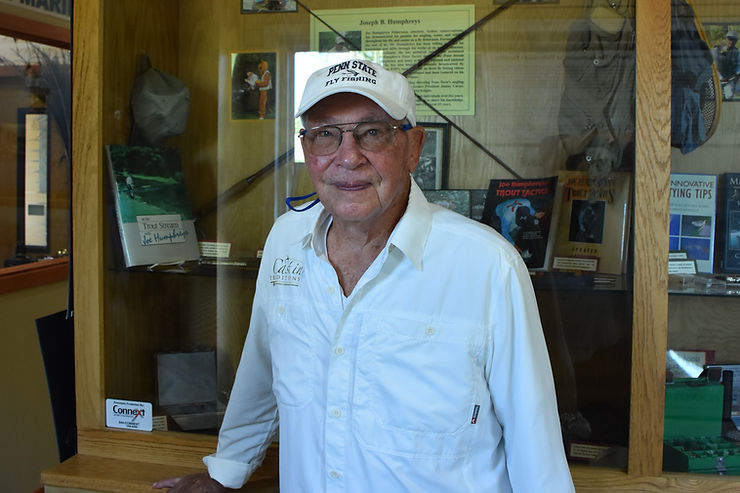
Born on January 19, 1929, in Curwensville, Pennsylvania, Joe Humphreys always had an innate passion for water and the creatures that lived there, a passion that found expression when his father moved their family to State College, in 1935, where he found work.
This was the heart of fly fishing country, dozens of streams within an easy bike ride of home and only a few good casts from Spring Creek’s legendary Fisherman’s Paradise, the first fly fishing only project in the country.
On their first trip to Spring Creek, Joe and his father fished worms at the ends of their bamboo rods. Joe’s first cast into the hallowed waters was greeted by a hungry, 8-inch brown. He marveled at its beautiful spots and halos, and above all its wildness, and decided that this was a worthy pursuit. From then on, fishing became a quest, and the mostly self-taught young angler pursued it with the patience and dedication of someone who knows that good things often come with struggle, and so any failure would only serve to inspire him rather than set him back.
Shortly after his introduction to fly fishing, Joe’s interest in the sport took on a new urgency. He knew this was what he wanted to do for a living. “I wanted to be like Ray Bergman,” he says, which worried his mother, Ruth, even years later on her death bed. She professed to her doctor that she was concerned about her son Joe because she didn’t know what was going to become of him. All he wanted to do was fish, and there was no future in that.
Joe learned of these words for the first time in 2013 at an event at the National Fly Fishing Hall of Fame museum that was arranged to honor his life and contributions to the community. That’s when the doctor’s wife took the stage and told the story, finishing with, “Mrs. Humphreys, I don’t think you have to worry about Joe. He’s doing very well.”
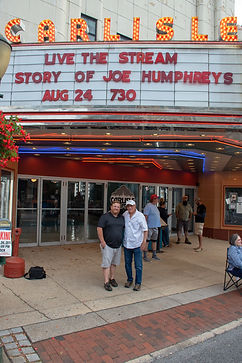
Thompson Run
Thompson Run, a major tributary to Spring Creek, was Joe Humphreys’s first love. He rode his bicycle there after school, still wearing his good bib overalls, fly rod laid across the handlebars. He wanted to beat the other kids so he could sneak up on a pool known as the Fly Hole, where several trout always liked to feed. His attempts were unsuccessful. The awkward plop of the fly on the water’s surface sent fish scrambling for cover.
Finally, he sat and watched the fish. Weekend mornings he crawled through the wet grass to within sight of the pool, noticing how the larger trout interacted with the smaller ones, how their positions changed when they were feeding. He also observed a pecking order in which the bigger ones bullied the small ones, and the small ones often just tried to avoid being eaten. He noticed something else, too. Even though the fish weren’t rising, they were still feeding.
After a while, he couldn’t stand it any longer and charged into the pool, ripping a handful of weeds out of the stream bottom and finding it “crawling with hundreds of freshwater shrimp,” he recalls. “So I went home and tied what I thought might resemble those shrimp, complete with a hint of orange thread lifted from my mother’s sewing basket.”
He pedaled back to Thompson Run with his creations in his pocket and revenge on his mind. If one thing hasn’t changed in almost 80 years, it’s his desire to catch trout. At some point during every day, Joe makes a conscious effort to lay his rod aside and witness the natural beauty around him, but to hear him talk, one might believe he only does this after he’s caught his fair share of fish.
Once at Thompson Run, the young angler made a clumsy cast that somehow found the water, albeit off target of the 14-inch brown feeding at the tail end of the pool. “I’ll be damned if he didn’t turn and eat it anyway!”
A nymph fisherman was born, but only after a bike ride home “singing at the top of my lungs” to show his mother his prize. It wasn’t his first trout, but it changed everything.
The Natural Competitor
Joe Humphreys is nothing if not competitive. In sports or fly fishing, he maintains a relentless desire to succeed and doesn’t stop until he accomplishes what he sets out to do. He wrestled in high school, making it all the way to the regionals where he took second place. He participated in the Olympic trials in New Jersey where he again finished second. Upon graduation, he joined the U.S. Navy and was quickly recruited onto the wrestling team, where he placed in the All-Navy Championships and won the Atlantic Fleet.
While detained at Annapolis prior to discharge, he was asked to join the Annapolis wrestling team. But he’d had enough of the Navy and was ready to move on to Penn State University (PSU).
Humphreys continued to wrestle and box at PSU with longtime friend Larry Fornicola, who, through various girlfriends, had met someone he thought might be right for Humphreys. Her name was Gloria, and she would become the love of Joe’s life. They married and raised two daughters, Dolores and Johanna, in an old mill that had been converted into a house on the banks of Spring Creek.
At PSU, Humphreys studied exercise and sports science, known today as kinesiology, though he says, “Call it what you like, it’s still just Phys. Ed.” He went on to coach wrestling at Bald Eagle High School, and when the opportunity arose to succeed George Harvey as PSU’s fly fishing instructor, he only hesitated to accept the position because he believed the next age class of wrestlers coming up had a chance to win the world championships. In the end, fly fishing beckoned, and it was a call he couldn’t refuse.
Later in life, Humphreys competed in several World Fly Fishing Championships in Ireland and Wales before winning his first and last medal, a bronze, in Portugal in 2017. But his competitive spirit can be traced back to his teenage years and his first meetings with Ed Shenk, with whom he’d eventually spend 38 years on the fly fishing circuit, teaching classes and giving lessons at the Allenberry Resort on Yellow Breeches Creek.
“There was a time I didn’t like Ed,” Joe recalls. “I was in high school and he was in college. He’d come down and fish my stream, Thompson Run, and he could catch fish and I couldn’t. I didn’t like anyone who could catch more fish than me.”
Shenk had a competitive streak of his own. Once, while fishing for Atlantic salmon on the Gaspe Peninsula, his guide spotted a large fish across the river that he thought would hit if Shenk could get the fly to it. Shenk muttered doubt that he could succeed, noting it would take one hell of a cast. The guide replied, “Joan Wulff could do it. I saw her make that cast.” That angered Shenk just enough that he made the cast and caught the fish.
Humphreys says, “We worked well together.” Their styles and personalities complimented each other in the classroom and on the stream. They had a no-nonsense gift for teaching folks of all ages how to handle a fly rod and, more importantly, how to enjoy the sport of fly fishing.
An Award-Winning Film About The Fly Fishing Legend Joe Humphreys Available From Nomadic Studio.
--Joe Humphreys
The Master and His Student
As a boy, Joe Humphreys knew of George Harvey because they both fished Spring Creek. He knew little about Harvey other than that he was famous, and when opening day of trout rolled around, there was the inevitable newspaper piece about how Harvey had fared on the stream – headlines such as “Harvey Catches Two Fish with One Cast.”
Their first meeting occurred during the Sulphur hatch along the sawmill stretch of Spring Creek. Harvey, as usual, had the trout figured out, while Humphreys had on a pair of snelled wet flies that he couldn’t get to fish right. He approached Harvey with his problem. Harvey laid his rod aside and fixed the tandem rig while barely saying a word. But after that, when their paths crossed on Spring Creek, Harvey often suggested Humphreys try a particular pool or cast to a certain spot.
In 1954, Humphreys took Harvey’s fly fishing class at PSU, at the time the only accredited fly fishing class in the country. Immediately, Humphreys’s refined fly tying and casting skills stood out, and Harvey quickly recruited him to help other students in the class. He became an expert at picking out backlashes and learned the patience required to help his classmates succeed.
As the years wore on, Harvey called Humphreys more often to go fishing. Although Joe may not have realized it at the time, he was being groomed as Harvey’s successor, and when Harvey retired, PSU hired Joe on Harvey’s recommendation alone. That was in 1972, and over the next 19-plus years, Humphreys introduced thousands of students to the art of fly fishing and has become somewhat of an ambassador for his alma mater. Rarely is Joe photographed without a PSU hat on his head.
The Trout that Bought A Round
Humphreys began night fishing because Harvey loved to fish after dark. He came to love those inky, moonless nights, and the thrill of plying dark waters with huge wet flies in search of leviathan brown trout. On a summer night in 1975, he located such a fish, which when it rolled at the surface sounded like an animal had jumped into the stream. Over the next three years he pursued that trout so often his wife almost divorced him.
Fishing Creek in the 1970s held some huge trout. This fish occupied the pool downstream from the hatchery, spending its days under a brush pile that lined the slower water against the opposite bank. For two years, Humphreys spent most of his energies on fishing the tail end of the pool, the most likely feeding lie for any big fish at night. The third year, upon Harvey’s suggestion, he began fishing the entire pool, from top to bottom, every night he could.
On August 8, 1977, Al Hagg called Humphreys, hoping to get out for a night-fishing session. Joe was still riding a high from the previous night’s fishing with Lefty Kreh, who’d called him needing something to write about for his next column in The Baltimore Sun. Humphreys had landed a 26-inch brown trout on Penns Creek, and Kreh got the story.
Hot on the heels of this success, Humphreys and Hagg headed to Fishing Creek. By midnight, Joe had only a 19-incher to his credit and decided to work the pool over one more time before calling it quits. He got to the riffles at the head of the pool and shot his line out into the slower water on the other side, just as Harvey had suggested, and his rod tip shot downward.
“I put the hammer to it,” Joe says. “The fish made a bee-line for that brush pile, but I turned it. I wasn’t using no 6x tippet. I had on stuff heavy enough to lift a backhoe out of the water.”
As the fish reached exhaustion, Joe threw his fly rod up onto the bank and wrestled the trout to shore. It was the biggest fish either of the men had ever seen, and they set out for the warden’s house to get it officially weighed and measured. But first, a quick stop at the Nittany Bar, where a cocky young bartender liked to brag about all the big trout he caught. Joe went up to the bartender and said, “If I show you a fish bigger than anything you’ve ever caught, would you give us free drinks?” The bartender agreed.
Humphreys hauled in what would for many years stand as the state record brown trout, 33 inches long and 16 pounds, and laid it flat on the bar. The bartender set out a row of glasses and began pouring drinks.
The Duck Pond
In the 1950s, when Benner Pike was rebuilt, Thompson Run was diverted into what was known as the Duck Pond to make room for the new roadway. The Duck Pond was used as a catch basin for storm water runoff and effluent from State College and Penn State University. Thompson Run, fed by many numerous limestone springs, provided a valuable flow of cold, clean water for Spring Creek. After diversion, it mixed with the warm, stagnant pond water, and downstream of its confluence, Spring Creek rapidly deteriorated.
In 1975, as PSU announced its intent to initiate a living filter concept in which sewage would be piped several miles away and sprayed onto university property and State Game Lands 176 instead of dumped into the Duck Pond, Humphreys saw it as an opportunity to restore Spring Creek to its former greatness. Upon the suggestion of Gene Brown of the Penns Creek Chapter of Trout Unlimited, Humphreys invited five fishing buddies to his house, and, at a table in the basement, formed the Spring Creek Chapter of TU.
They newly-formed organization drew up plans to reroute Thompson Run around the Duck Pond, and Humphreys drove to Harrisburg to get the permits. Despite heckling from several local officials, all of whom said he’d never succeed, Humphreys returned with the proper paperwork. The only problem was that the estimated cost of the project was $130,000, but there was only $120 in the chapter treasury and representatives at the state council denied funding.
In true Joe Humphreys fashion, he pulled the community together, using his charm and charisma to gain favors from local businesses and contractors. The Glenn O. Hawbaker Construction Company built the dike and dredged the Duck Pond. H.R. Imbt donated pipe to be used in the breast of the dam. Centre Concrete and Sheesley Supply Company provided concrete for the sluiceway. Other local businesses donated wire and fencing to use as reinforcement, additional fill, and the necessary machinery and manpower to get the job done. The impossible became reality, and Thompson Run once again provided clean, fresh water to Spring Creek.
“A local writer said that even with the construction, the stream would probably never come back, that it was beyond repair,” says Humphreys. “Well, within two years, all that great cold water had pumped new life into the stream, hatches returned, and trout thrived. Someday, we’ll have a Green Drake hatch again, too – you just watch.”
Over time, the earth used to divert the water has eroded. Muskrat holes and tree roots have compromised the integrity of the dike. Once again, Humphreys took action. Penn State University has guaranteed him the money to refurbish and solidify the dike, and at a recent gig at the Allenberry Resort, Humphreys met a contractor who offered to do the work free of charge. The project will be completed, once and for all, in the summer of 2020, and Humphreys will be there to make sure it’s done right.
Wrestling with Mortality
Joe’s wife, Gloria, passed away in May 2014, from cancer. His mother died at age 58. His brother died at 47 in a brush hogging accident. Many of his closest friends and old buddies have also passed away, and he’s quite aware of his own mortality. “It sucks to get old,” he laments.
Today, at 90 years old, soon to be 91, Joe Humphreys is still sharp as ever and still one hell of a fly fisherman. “You want to know the secret to a happy life? Always have something to look forward to.” That means continuing to chase big trout. “I want to catch a 20-pound brown on a fly,” he says.
Joe Humphreys is revered by many, not only for his books and instructional videos, all of which are still very popular, but also for his passion and, above all, his presence. When he’s in the room, you can’t help but feel good. Few blank spaces remain on his calendar. Most dates are booked well in advance with sports show appearances, casting seminars, youth fly fishing camps, or volunteering with groups such as Project Healing Waters. It’s not that he can’t say no; it’s just that the idea never occurred to him. Joe seemingly has time for everyone, sharing with each person he meets a little piece of himself and his love for fly fishing.
The branches of his influence can be seen across a continent, maybe even the world. Somewhere on some distant stream an angler is teaching another angler how to fly fish. They may have learned the techniques from someone else, who in turn learned from someone else, who learned them from Joe Humphreys. His impact on fly fishing will be felt long after he has seen his final trout rise. And when the end comes, you can bet Joe Humphreys will be found on his beloved Spring Creek, or perhaps even Thompson Run, trying to catch one more trout.
Note: This article first appeared in the January/February 2020 issue of Eastern Fly Fishing. In July 2020, Eastern Fly Fishing merged with its sister publications, Northwest Fly Fishing and Southwest Fly Fishing, to form American Fly Fishing. Basically, this “new” magazine is a conglomerate of all three titles, same great features, great photography, and lots of beautiful fly fishing destinations. I hope you’ll consider checking it out. Visit www.AmericanFlyFishing.com.
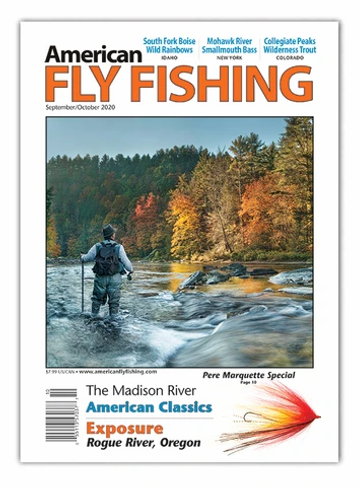
Did You Enjoy Reading About The Fly Fishing Legend Joe Humphreys?
Stay up to date with the Dark Skies Fly Fishing monthly newsletter for free and receive the latest in fly fishing news, tricks, tips, and techniques, stream reports, as well as updates on new flies added to the Online Store and exclusive discounts!
Sign Up Now
I so wish I could have met this great man! I’m just getting started in fly fishing and I’m looking forward to reading his books,and gathering any information I can about this Sensei of fly fishing! RIP sir,you have a wonderful legacy!
Joe is still alive and fishing as much as possible, so there’s still a chance you’ll see him on the water in Central PA!
I attended a fly fishers class 3 times with Joe. Twice on Spring Creek and once on Clarks Creek, all in PA. Joe is a master and makes nymph fishing look easy. He taught the techniques the tuck cast. He is the last of the fly fisher’s greats. Thank you Joe for letting me fish with you.
Joe is a friend of mine and I have fished with him on Spring Creek. He is amazing with such control and finesse. Always a great time to Fish with Joe
Hi There
I just watched the Live The Stream documentary and felt so empty not fishing more. I took up fly fishing with a friend when i was 30, 28 years ago but have mastered nothing and work and life always got in the way.
I was actually starting to think i need to have coffee with Joe so some of his wisdom may rub of on me.
What an inspiring life through thick and thin
Camel
Camel, thank you so much for reading and commenting. It’s interesting you say about feeling empty that you didn’t fish more. I’ve often felt the same way when encountering people who have such “full” lives. It makes one realize the potential for our lives, and how much we can do, yet we often don’t do the things we love as often as we’d hope. But there’s always today, and you can always make time to go fishing right now.
Best of luck, and hope you have that coffee with Joe. Thanks for reading!
Ralph
Hi Ralph
I will actually be in Philadelphia on Sunday and was hoping to drive out to Boalsburg. Would you be able to make an introduction to Joe?